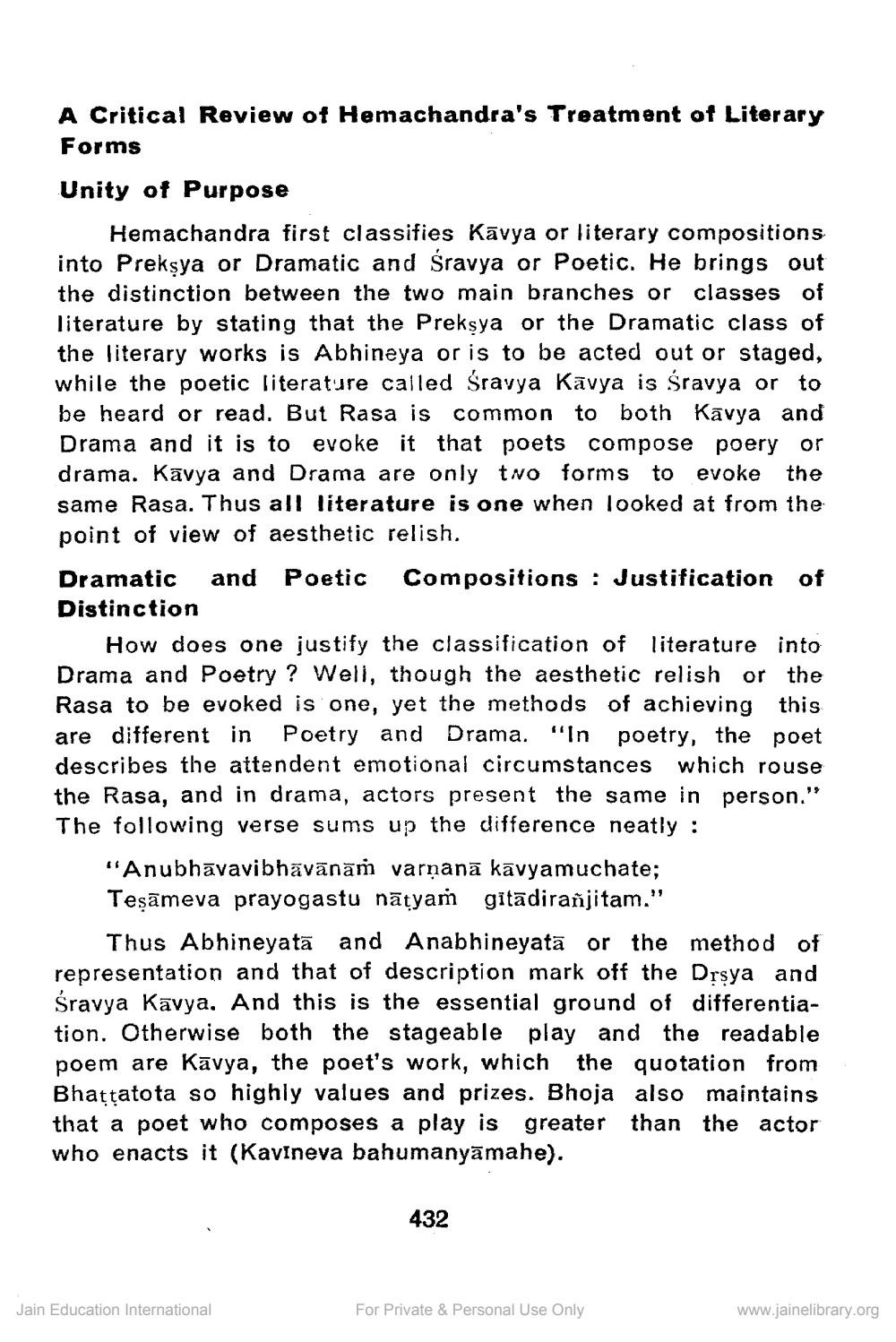________________
A Critical Review of Hemachandra's Treatment of Literary Forms
Unity of Purpose
Hemachandra first classifies Kavya or literary compositions into Preksya or Dramatic and Sravya or Poetic. He brings out the distinction between the two main branches or classes of literature by stating that the Preksya or the Dramatic class of the literary works is Abhineya or is to be acted out or staged, while the poetic literature called Sravya Kavya is Śravya or to be heard or read. But Rasa is common to both Kavya and Drama and it is to evoke it that poets compose poery or drama. Kavya and Drama are only two forms to evoke the same Rasa. Thus all literature is one when looked at from the point of view of aesthetic relish.
Compositions: Justification of
How does one justify the classification of literature into Drama and Poetry? Well, though the aesthetic relish or the Rasa to be evoked is one, yet the methods of achieving this are different in Poetry and Drama. "In poetry, the poet describes the attendent emotional circumstances which rouse the Rasa, and in drama, actors present the same in person." The following verse sums up the difference neatly:
Dramatic and Poetic
Distinction
"Anubhavavibhāvānāṁ varṇanā kāvyamuchate; Teṣameva prayogastu natyam gitadiranjitam."
Thus Abhineyata and Anabhineyata or the method of representation and that of description mark off the Drsya and Śravya Kavya. And this is the essential ground of differentiation. Otherwise both the stageable play and the readable poem are Kavya, the poet's work, which the quotation from Bhaṭṭatota so highly values and prizes. Bhoja also maintains that a poet who composes a play is greater than the actor who enacts it (Kavineva bahumanyāmahe).
Jain Education International
432
For Private & Personal Use Only
www.jainelibrary.org




